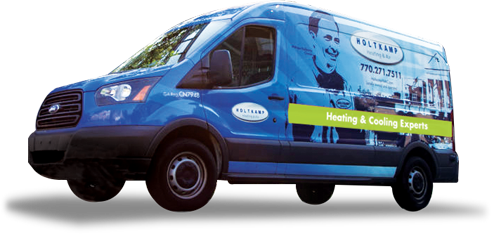It’s hard to believe it’s been 10 years since we built our “new old house”. When we embarked upon the task of building a home which looked old but was the model of energy efficiency, we knew we would have several challenges blending the home’s greek revival architecture with the comforts of the 21st century.
One area Matthew and I spent countless hours “discussing” was the lighting. I wanted fixtures which looked at home in the space; he wanted the newest technology which meant ‘compact fluorescent’ light bulbs.

The lighting gods must have smiled on me because after hours of research, I located manufacturers of “gasolier lighting” that would accommodate a normal size light bulb. Now Matthew needed to show me that CFLs weren’t going to turn my antebellum home into a painful shopping mall fluorescent fiasco.
After several trial runs choosing bulbs, we were able to outfit the entire home with CFLs and in our estimation, it has saved us many hundreds of dollars in electricity, not to mention the fact that most of the original bulbs are still alive and kicking. The choices back in 2006 are laughable compared to what is available ten years later. Take a walk with me down the lighting aisle of your local store!
Choosing Modern Light Bulbs
Did you know that early light bulbs were in the works way back in the mid-1800’s? As noted by the Department of Energy, things have come a very long way since then. Today, homeowners like you have many choices that strike a good balance of natural light, long lasting quality and energy savings.
The two most popular versions of modern light bulbs are CFL (Compact Fluorescent Lamp) and LED (Light Emitting Diode).

The experts at Forbes Magazine provide some key tips on choosing between CFL or LED light bulbs:
CFL Advantages
- CFL, or compact fluorescent, is simply a mini version of a standard fluorescent light bulb, However, these bulbs fit in standard light sockets without any adaptor.
- The light now appears much like the incandescent light we’re used to, and looks nothing like the harsh lighting we associate with offices or school buildings.
- Since the 1990’s when CFL bulbs were big, bulky and performed inconsistently, improvements in their performance, price, efficiency (using about 75% less energy than incandescents) and lifetime (lasting about 10x longer) have made them a viable option for both renters and homeowners.
CFL Disadvantages
- The primary disadvantage to CFL lights is the mercury contained in the bulb. This is ordinarily not a problem, but if the bulb breaks clean-up is a hassle. Mercury is a dangerous heavy metal, and proper cleanup and disposal of CFL bulbs is critical. See the EPA’s recommendations on cleaning up a broken CFL bulb.
- Never put a used CFL bulb in with the rest of your trash. Contact your local waste management company to learn how to properly dispose of used CFL bulbs. Most major home improvement retailers, including Lowe’s, Home Depot and Ace Hardware, offer free recycling collection for unbroken bulbs.

LED Advantages
- LED lights last significantly longer, so even though you’re paying more at purchase, you buy fewer bulbs over time.
- Like CFLs, these bulbs fit in standard light fixtures with no adaptor necessary.
- LED makes very nice lighting for effect and decorative purposes.
Since 2008, the cost of LED bulbs has fallen more than 85 percent. - Today’s LED bulbs are also up to 7X times more energy efficient than conventional incandescent lights, cutting energy use by more than 80 percent and lasting up to 25x longer.
LED Disadvantages
- LED lights generally cost more to buy than CFLs, but manufacturing technologies are lowering these prices continually.
- These lights are directional, meaning they are excellent for lights under cabinetry, but not as suitable to table lamps. Some of the newer LED lights come with diffusers, which helps some.

Now that you better understand the pros and cons of CFL and LED light bulbs, here are 6 more tips to consider when purchasing modern bulbs:
- You will often find a range of 4-5 colors ranging from warmer to cooler hues, and these are now able to better simulate the natural lighting of incandescent bulbs. Consider purchasing a small number of bulbs and trying them to explore the shades/hues in your rooms.
- Good news: big box retail stores typically accept returns of any bulbs that are not right for your home for any reason; just be sure to keep your receipt.
- Be sure to check shapes of the bulbs as some exposed fixtures will better work with traditional bulb shapes versus “LED sticks” and other stylized bulbs. If the bulb is exposed, consider selecting a more traditional shape.
- No matter which you choose, these modern bulbs give off little or no heat unlike older incandescent bulbs.
- While they might be slightly more expensive, they might be last light bulb you buy thanks to their “lifetime” warranties. You’ll get many years out of them, versus only months of the older style bulbs.
- CFL or LED bulbs offer incredible energy savings over incandescent bulbs, in addition to bulb replacement savings from their long-lasting life.

BONUS: Interesting facts & trivia about the long history of light bulbs:
- In 1879, Thomas Edison’s team produced a light bulb with a carbonized filament of uncoated cotton thread that only lasted for 14.5 hours, eventually settling on one made from bamboo that gave Edison’s lamps a lifetime of up to 1,200 hours.
- By the late 1930s, American companies were demonstrating the first fluorescent lights to the U.S. Navy and at the 1939 New York World’s Fair, lasting longer and 3X more efficient than incandescent bulbs.
- The 1973 oil crisis caused lighting engineers to quickly develop fluorescent bulbs for use in residential applications.
- In 1976, GE figured out how to bend the fluorescent tube into a spiral shape, creating the first compact fluorescent light (CFL).
Whether you choose CFL or LED bulbs for your home, you’ll be making an energy efficient choice that is guaranteed to reduce your energy bills. Want more advice on your bulb of choice? Call us at 770.271.7511 or drop us a line!





